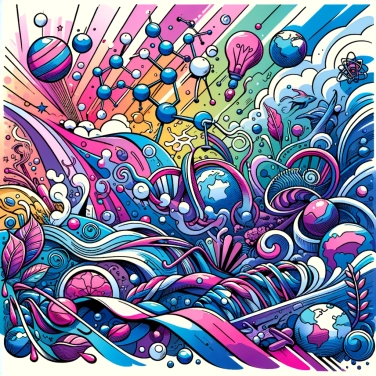In detail, for those interested!
High soil temperature
In summer, the sun shines intensely and heats the ground. This heat is absorbed by the ground, which acts as a thermal reservoir. During the day, the temperature of the ground increases, reaching high levels in the afternoon. The higher the temperature of the ground, the greater the temperature difference between the air just above the ground and the air at higher altitudes.
This temperature difference creates a phenomenon called a thermal gradient. Indeed, hot air is less dense than cold air. Thus, a layer of hot air forms near the surface of the ground, while a layer of cooler air is located higher in the atmosphere. This thermal gradient acts like a lens, causing the refraction of light.
When sunlight passes through these different layers of air with varying temperatures, it is bent at different angles. This creates variations in optical density, which can give the illusion of bodies of water, wet roads, or mirages on the road. These mirages are optical phenomena caused by the refraction of light by layers of air with different temperatures, creating visual illusions on the roads, appearing as water puddles or reflections.
In summary, the heat of the sun in summer heats the ground, creating a thermal gradient that alters the trajectory of light and generates mirages on the roads.
Thermal gradient and light refraction.
During hot summer days, the ground tends to warm up quickly when in contact with the sun's rays. This heat is then transferred to the air directly above, creating a thermal gradient, that is, a variation of temperature with altitude. This thermal gradient can lead to specific optical phenomena, including the refraction of light.
Light refraction occurs when light rays pass through mediums of different densities, such as the hot air near the ground and the cooler air at higher altitudes. Due to this density difference, the speed of light varies, causing a change in the direction of light rays. This phenomenon can give the impression that objects observed through these layers of air are distorted or displaced, creating optical illusions such as mirages.
Therefore, the thermal gradient generated by summer heat combined with light refraction plays an essential role in the formation of mirages on roads during the summer. These optical phenomena can surprise drivers by giving them the impression of seeing shimmering water in the distance, when in reality it is a distorted reflection of the sky.
Mirage effect on roads
The mirage effect on roads is an optical phenomenon that occurs when light is refracted through layers of air of different temperatures, creating a visual illusion of reflective surfaces where there are none. On a road heated by the sun in summer, the air near the ground is warmer than the air at altitude, creating a thermal gradient that affects the path of light.
When sunlight reaches this thermal gradient, it is bent non-uniformly, causing distortion and refraction effects. These temperature variations create zones of different air densities, leading to changes in the speed of light propagation and refraction phenomena.
Mirages observed on roads in summer often appear as false bodies of water, winding roads, or floating vehicles. These optical illusions can disrupt drivers' vision and pose potential accident risks. It is important to remain vigilant and take these phenomena into account when driving in hot weather.
These mirages are fascinating examples of how light behaves when passing through different temperature environments, offering intriguing visual displays but requiring special attention to avoid any dangers on summer roads.
![Explain why some countries change time zones?]()
![Explain why Alexander the Great refused to wear shoes.]()
![Explain why Alexander the Great always wore an impressive helmet.]()
![Explain why the last Chinese emperor was so young when he came to power?]()





















